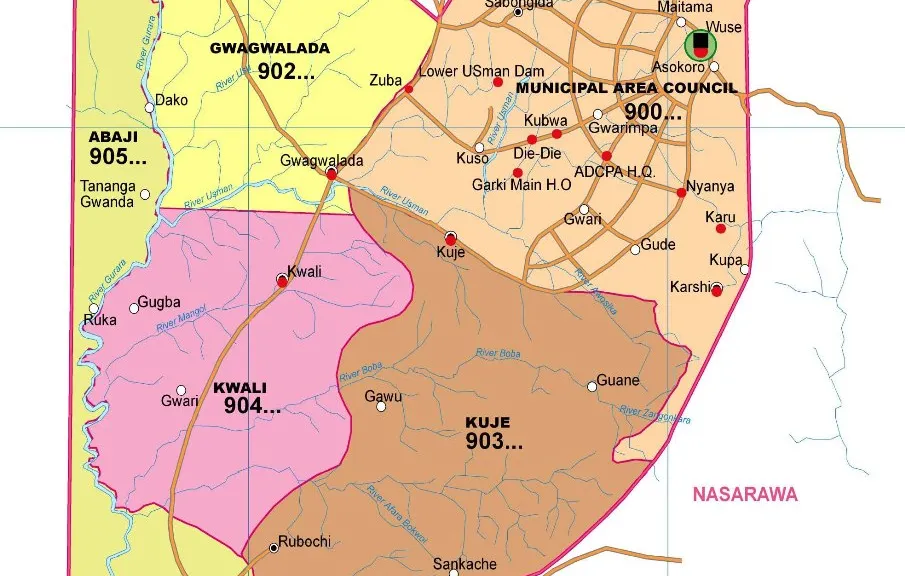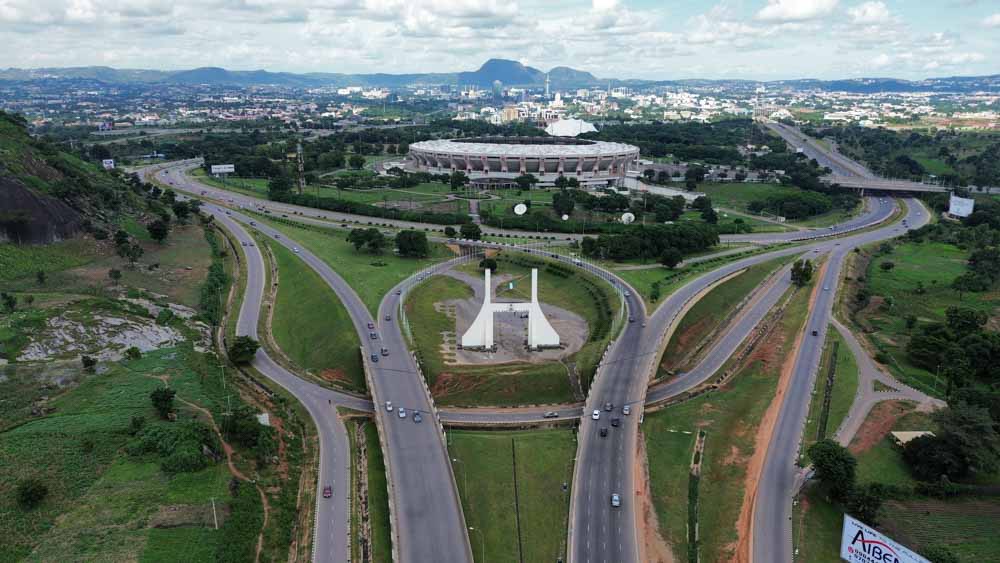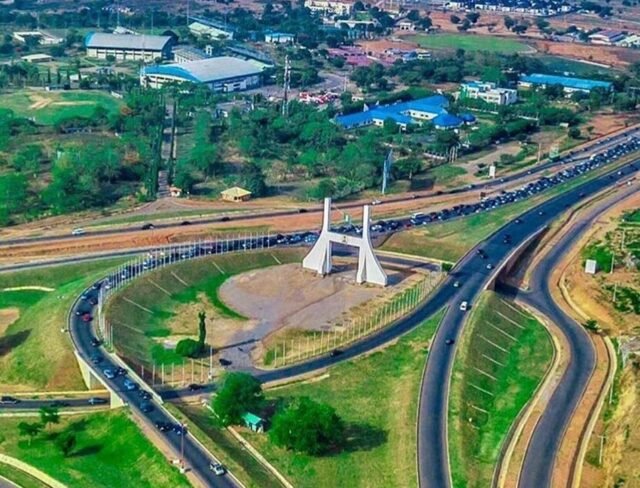When Nigeria shifted its capital from Lagos to Abuja in December 1991, it wasn’t just a relocation—it was a nation’s bold stroke toward unity, modernisation, and geographic balance. Today, Abuja stands as both a political linchpin and a burgeoning urban paradise. Here’s your complete insider’s tour of this purpose-built city’s history, landmarks, economy, and future.
Table of Contents

Visionary Beginnings: A Capital Born by Design
Abuja’s inception came in the mid‑1970s, when Nigeria’s leadership sought a centrally located, sparsely populated location to minimize ethnic and regional tensions. A panel under Justice Aguda settled on a site south of the old town then known as Abuja (later renamed Suleja), and Decree No. 6 of 1976 formally established the Federal Capital Territory (FCT) around it.
Master planning commenced in the early 1980s, led by international architectural firms and Japanese planner Kenzo Tange. The vision? A modern, meticulously zoned city tailored for governance, growth, and harmony. Though initial development was modest, by the late 1980s most foundational elements were in place; by December 1991, Abuja officially became Nigeria’s new capital.
Geography & Climate: Nature Meets Planning
Abuja is majestically situated at roughly 9.06° N, 7.49° E within the FCT, bordered by Nasarawa, Niger, Kaduna, and Kogi states. It rests on undulating terrain of Chukuku Hills and plateau ground, approximately 360 meters (1,180 ft) above sea level—a reason it enjoys milder, less humid weather than coastal metropolises like Lagos.
The city experiences a tropical savanna climate: a rainy season from April through October, followed by a dry season (with occasional Harmattan haze) until late March.
Population & Urban Layout: Organised Expansion
From its original rural roots, Abuja has transformed into one of Africa’s fastest‑growing cities. By 2024 its population was estimated at over 4 million—up from around 3.8 million in 2023, growing at nearly 5% annually.
The city is divided into thoughtfully zoned districts:
- Three Arms Zone: Houses the Presidential Villa, National Assembly, and Supreme Court.
- Central Area & Surrounds: Contains administrative offices, Millennium Park, the National Mosque and the Christian Centre.
- Residential districts: Include high‑end Maitama and Asokoro, commercial Wuse (divided into zones), and sprawling Gwarinpa—the largest housing estate in West Africa.
- Recreation zones: Jabi (with Jabi Lake Mall and recreational lakeside), and green spaces such as Millennium Park and the National Children’s Park & Zoo.
Markers of Identity: Landmarks & Cultural Anchors
Aso Rock & Zuma Rock
Aso Rock is Abuja’s defining monolith—about 400 m tall and rising to nearly 936 m above sea level. It overlooks the Three Arms Zone and government headquarters. Zuma Rock, though outside the city proper, is another geological emblem frequently associated with Abuja.
National Religious Centres
Reflecting Nigeria’s religious diversity:
- Nigerian National Mosque: A striking golden-domed structure open to all visitors.
- National Christian Centre: A bold architectural partner across religious lines.
Millennium Park
At 80 acres, Millennium Park is the largest landscaped public park in the city, inaugurated by Queen Elizabeth II in December 2003. Designed by Italian architect Manfredi Nicoletti, part of the park mimics Nigeria’s ecological zones—from rainforest to savanna—while formal gardens lead visually to Aso Rock.
Millennium Tower & Cultural Complex
The ambitious Nigeria Cultural Centre and Millennium Tower (170 m tall)—though incomplete—promise new cultural prominence when finished around 2025

Mobility & Infrastructure: Moving the Capital Forward
Abuja’s road network was a foundational pillar in planning: wide, well‑paved highways link district zones, airports, and suburbs. Nnamdi Azikiwe International Airport—the city’s gateway—is located roughly 20 km from downtown and serves both domestic and international flights.
Abuja Light Rail
Launched in July 2018, Abuja’s rail mass transit system covers two lines and 45 km of track, connecting the city centre to the airport via 12 stations. After a COVID‑related pause, services resumed in May 2024. The government offered free rides until year‑end to ease commuter costs during widespread subsidy removals.
Future plans envision a 292 km network in six phases to enhance connectivity and curb congestion for suburban commuters
Political & Economic Hub: Governance, Diplomacy, Enterprise
As Nigeria’s seat of power, Abuja hosts the presidency, legislature, judiciary, and numerous Federal Ministries. It’s also the headquarters for ECOWAS and other regional institutions, reinforcing its role in diplomacy and West African governance.
Economically, the city is a corporate and governmental magnet: embassies, oil companies, tech startups, security agencies, and international consultancies cluster here. It’s a centre for real estate, hospitality, IT, and government‑contracting enterprises.
Culture, Lifestyle & Festivals: Abuja Beyond Bureaucracy
Abuja celebrates Nigeria’s rich cultural tapestry through events like the annual Abuja Carnival, held each December since 2005. Expect flamboyant parades, boat regattas, Durbar horse displays, and cultural showcases representing all 36 states, drawing up to 200,000 participants and thousands of spectators.
The city also boasts a growing arts scene—galleries, performing arts theatres, music venues, and bush‑bar hangouts where locals enjoy suya, performances, and relaxed evenings outdoors.
Challenges Ahead: Growth Comes at a Cost
Rapid expansion isn’t without growing pains. Informal settlements on Abuja’s fringes strain infrastructure; traffic and housing affordability remain issues, particularly for low‑income residents.
Environmental pressures such as deforestation, biodiversity loss, and rising waste are intensifying. Authorities have launched green initiatives and sustainable building policies to address them.
The Road Ahead: Projects & Prospects
Abuja’s future is underpinned by bold developmental projects:
- Centenary City: A mixed-use smart city intended as a business, residential, and innovation hub.
- Transport expansion: Completing light rail phases, road upgrades, and transit corridors.
- Green urbanism: Emphasising parks, renewable energy, and environmental standards in new builds.
- Cultural infrastructure: Completion of the Millennium Tower complex and boosting art and heritage institutions.
The vision: a capital not just for governance, but a living showcase of sustainability, inclusion, creativity, and quality of life.

Why Abuja Matters
In its relatively short life span, Abuja has become:
- A symbol of national unity: bringing together Nigeria’s mosaic of ethnicities and religions in one neutral urban space.
- A diplomatic cornerstone, hosting more than 150 diplomatic missions and international organisations.
- A model of modern African city planning, unique in how it merges government, culture, nature, and commerce.
- A gateway to future growth, from urban innovation and investment to cultural tourism and smart infrastructure.
Conclusion
Abuja is more than just Nigeria’s seat of power. It’s an evolving metropolis shaped by bold design, diverse people, and a clear ambition: to be a capital of ideas, ambition, and living culture. Whether you’re planning a visit, considering relocation, or simply curious about cities shaping Africa’s future—“Abuja: All You Should Know About Nigeria’s Capital City” offers you a panorama of what this city stands for today and where it’s headed tomorrow.
Join Our Social Media Channels:
WhatsApp: NaijaEyes
Facebook: NaijaEyes
Twitter: NaijaEyes
Instagram: NaijaEyes
TikTok: NaijaEyes








































